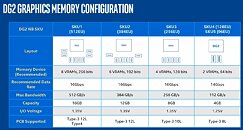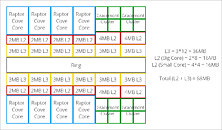
MSI Partially Reenables AVX-512 Support for Alder Lake-S Processors
Intel's Alder Lake processors have two types of cores present, with two distinct sets of features and capabilities enabled. For example, smaller E-cores don't support the execution of AVX-512 instructions, while the bigger P-cores have support for AVX-512 instructions. So Intel has decided to remove support for it altogether not to create software errors and run into issues with executing AVX-512 code on Alder Lake processors. This happened just months before the launch of Alder Lake, making us see some initial motherboard BIOSes come with AVX-512 enabled from the box. Later on, all motherboard makers pulled the plug on it, and it is a rare sight to see support for it.
However, it seems like MSI is unhappy with the lack of AVX-512, and the company is reenabling partial support for it. According to Xaver Amberger, editor at Igor's Lab, MSI reintroduces selecting microcode version with its MEG Z690 Unify-X motherboard. There is an option for AVX-512 enablement in the menu, and it is indeed a functional one. With BIOS A22, MSI enabled AVX-512 instruction execution, and there are benchmarks to prove it works. This shows an advantage of 512-bit wide execution units of AVX-512 over something like AVX2, which offers only 256-bit wide execution units. In applications such as Y-Cruncher, AVX-512 enabled the CPU to reach higher performance targets while consuming less power.
However, it seems like MSI is unhappy with the lack of AVX-512, and the company is reenabling partial support for it. According to Xaver Amberger, editor at Igor's Lab, MSI reintroduces selecting microcode version with its MEG Z690 Unify-X motherboard. There is an option for AVX-512 enablement in the menu, and it is indeed a functional one. With BIOS A22, MSI enabled AVX-512 instruction execution, and there are benchmarks to prove it works. This shows an advantage of 512-bit wide execution units of AVX-512 over something like AVX2, which offers only 256-bit wide execution units. In applications such as Y-Cruncher, AVX-512 enabled the CPU to reach higher performance targets while consuming less power.


















































